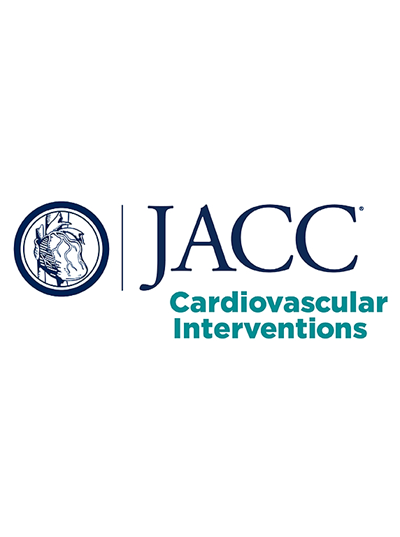Development of a Novel BifurcAID Risk Score to Predict MACE Following Coronary True Bifurcation Intervention
IF 11.7
1区 医学
Q1 CARDIAC & CARDIOVASCULAR SYSTEMS
引用次数: 0
Abstract
Background
Percutaneous coronary intervention (PCI) for true bifurcation lesions is associated with a higher risk of adverse clinical events.
Objectives
This study sought to establish a point-based score using clinical and angiographic characteristics in true bifurcation lesions before PCI to predict the risk of major adverse cardiovascular events (MACE).
Methods
A total of 1,896 consecutive patients undergoing PCI for true bifurcation lesions between 2012 and 2019 in our institution were included. All angiograms were reviewed by an independent core laboratory for classification of the bifurcation lesions. A multivariate model identified factors associated with 1-year MACE, comprising all-cause death, myocardial infarction, and target vessel revascularization. Points were assigned to each risk factor proportional to their regression coefficients to create a cumulative risk score. The score was used to stratify patients into low-, intermediate-, and high-risk cohorts.
Results
At 1-year post-PCI, MACE occurred in 185 patients (9.8%). Eleven predictors of MACE were identified: 5 clinical (insulin-dependent diabetes mellitus, left ventricular ejection fraction ≤30%, non–ST-segment elevation myocardial infarction presentation, age >80 years, and non-white race/ethnicity), and 6 angiographic (left main or left circumflex-obtuse marginal coronary artery lesion, multivessel disease, side branch [SB] thrombus, SB moderate/severe calcium, and SB lesion length >10 mm). The rate of MACE was 4.9% in low-risk patients with a risk score 0 to 6 (reference group), 12.9% in intermediate-risk patients with a score 7 to 9 (OR: 2.63; 95% CI: 1.74-3.98; P < 0.001), and 25.4% in high-risk group with a score ≥10 (OR: 5.18; 95% CI: 3.56-7.53; P < 0.001).
Conclusions
The BifurcAID risk score may facilitate risk stratification among patients undergoing true bifurcation PCI and guide patient-tailored treatment strategies.
新型BifurcAID风险评分预测冠状动脉真分叉介入后MACE的发展
背景:经皮冠状动脉介入治疗真分叉病变与较高的不良临床事件风险相关。目的:本研究旨在通过PCI术前真分叉病变的临床和血管造影特征建立基于积分的评分,以预测主要不良心血管事件(MACE)的风险。方法选取我院2012 - 2019年收治的1896例连续行PCI治疗真分叉病变的患者。所有血管造影由独立的核心实验室检查,以确定分叉病变的分类。一个多变量模型确定了与1年MACE相关的因素,包括全因死亡、心肌梗死和靶血管重建术。给每个风险因素分配与其回归系数成比例的分数,以创建累积风险评分。该评分用于将患者分为低、中、高风险组。结果pci术后1年MACE发生率为185例(9.8%)。确定了11个MACE的预测因素:5个临床因素(胰岛素依赖型糖尿病、左室射血分数≤30%、非st段抬高型心肌梗死表现、年龄80岁、非白种人/民族),6个血管造影因素(左主干或左旋-闭塞边缘冠状动脉病变、多血管疾病、侧支血栓、SB中度/重度钙化、SB病变长度10mm)。0 ~ 6分的低危患者MACE发生率为4.9%(对照组),7 ~ 9分的中危患者MACE发生率为12.9% (OR: 2.63;95% ci: 1.74-3.98;P & lt;0.001),评分≥10分的高危组为25.4% (OR: 5.18;95% ci: 3.56-7.53;P & lt;0.001)。结论BifurcAID风险评分有助于对真分岔PCI患者进行风险分层,指导患者个性化治疗策略。
本文章由计算机程序翻译,如有差异,请以英文原文为准。
求助全文
约1分钟内获得全文
求助全文
来源期刊

JACC. Cardiovascular interventions
CARDIAC & CARDIOVASCULAR SYSTEMS-
CiteScore
11.60
自引率
8.80%
发文量
756
审稿时长
4-8 weeks
期刊介绍:
JACC: Cardiovascular Interventions is a specialist journal launched by the Journal of the American College of Cardiology (JACC). It covers the entire field of interventional cardiovascular medicine, including cardiac, peripheral, and cerebrovascular interventions. The journal publishes studies that will impact the practice of interventional cardiovascular medicine, including clinical trials, experimental studies, and in-depth discussions by respected experts. To enhance visual understanding, the journal is published both in print and electronically, utilizing the latest technologies.
 求助内容:
求助内容: 应助结果提醒方式:
应助结果提醒方式:


